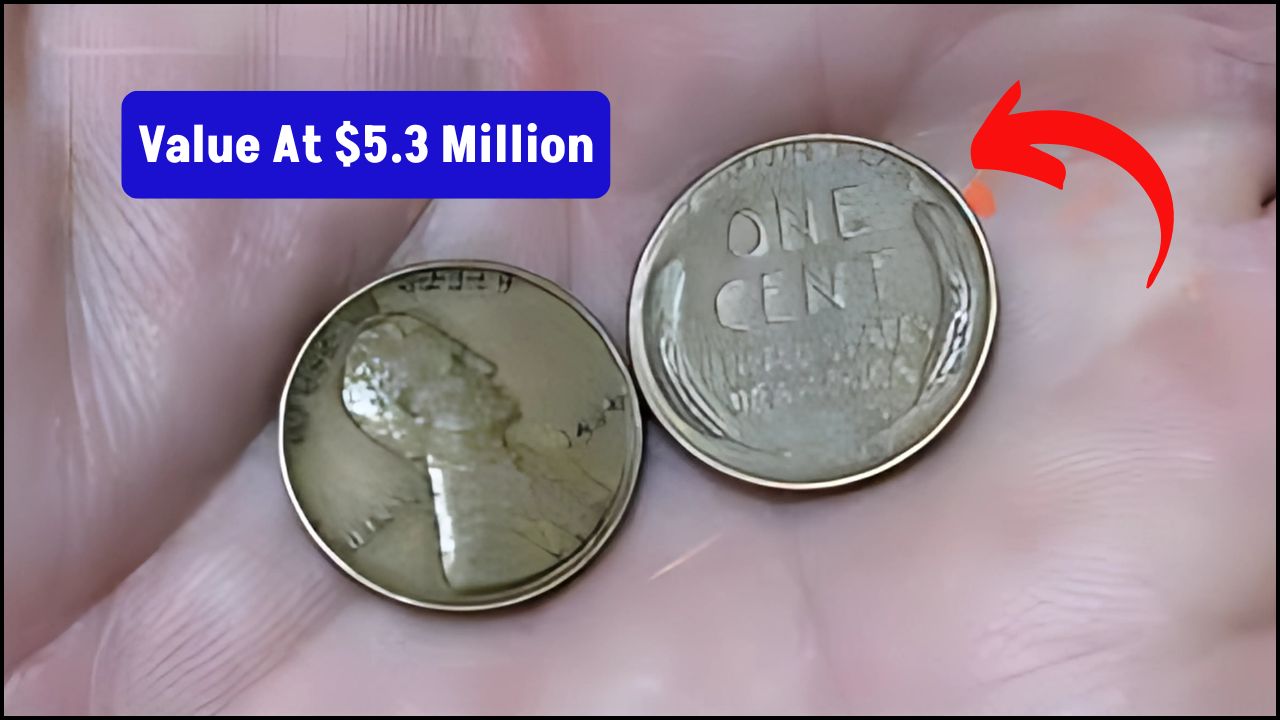The Lincoln Wheat Penny Valued at $5.3 Million : Here is the English translation of the high-quality, human-style article about the Lincoln Wheat Penny valued at $5.3 million:
The Lincoln Wheat Penny, often called a “Wheatie,” was minted from 1909 to 1958. It features the face of President Abraham Lincoln on the front and two wheat stalks on the back—hence the name. Though originally worth just one cent, certain rare editions of this coin have become legends in the numismatic world, fetching values as high as $5.3 to $5.5 million.
The $5.3 Million Mystery
Recently, reports have surfaced about a Lincoln Wheat Penny that may be worth up to $5.3 million—and could still be in someone’s pocket. Although no public auction record confirms this exact sale, private deals and expert estimates suggest such a price is not impossible for ultra-rare specimens with minting errors or limited production runs.
Which Versions Are Most Valuable?
Some editions of the Lincoln Wheat Penny are considered “mythical” among coin collectors. The most notable ones include:
1. 1943 Copper Penny
During WWII, the U.S. Mint used steel to produce pennies in 1943 to save copper for the war effort. However, a few copper planchets were mistakenly used. These rare errors—estimated at 30 to 40 coins—are now worth a fortune. One such 1943 copper penny fetched over $1.7 million, and other specimens are rumored to be valued at over $5 million.
2. 1909-S VDB Penny
This was one of the first Lincoln Pennies, with designer Victor D. Brenner’s initials (“VDB”) prominently displayed on the reverse. Due to public controversy, the initials were removed, making the original 1909-S VDB edition extremely rare. Only 484,000 were minted, and it remains one of the “Holy Grails” for collectors.
3. 1955 Double Die Penny
A minting error caused the date and inscriptions to appear doubled on this penny. This “Double Die” error has made the 1955 penny one of the most iconic error coins, with values ranging from $1,000 to $100,000+ depending on condition.
Could One Still Be in Circulation?
Absolutely. These valuable coins are often mistaken for ordinary pennies. Reasons they might still be around include:
- Most people don’t know what to look for.
- Rare pennies often look like regular coins unless examined closely.
- They may be hiding in old drawers, piggy banks, or family coin collections.
- Experts have stated that valuable coins occasionally surface unexpectedly.
How to Identify a Valuable Lincoln Penny
If you suspect you may have a rare penny, look out for:
- 1943 Copper Penny – Should not stick to a magnet and will have a reddish-brown color.
- Mint Marks – Look for “S” (San Francisco), “D” (Denver), or no mark (Philadelphia).
- Coin Grade – Higher grades (MS-60 or above) significantly increase value.
- Errors – Such as off-center strikes or doubled images.
- Designer Marks – Like “VDB” on the 1909-S penny.
How to Handle Rare Coins
If you think you’ve found a rare Lincoln penny:
- Do not clean it—this can reduce its value.
- Handle it by the edges and use gloves if possible.
- Store it in a coin holder or capsule.
- Have it authenticated and graded by a certified body like PCGS or NGC.
The Legacy of the Lincoln Wheat Penny
These pennies are not just currency—they’re pieces of American history:
- First minted in 1909 to commemorate Abraham Lincoln’s 100th birthday.
- World events like WWII influenced their composition.
- They offer a glimpse into the changing face of U.S. money and manufacturing.
Final Thoughts
Could there really be a $5.3 million coin still circulating? Absolutely. With the right year, mint error, and condition, a Lincoln Wheat Penny might be hiding in plain sight. Always check your change and inspect old coins—you never know when you’ll strike gold with just one cent.
The next time you see an old penny, think twice before ignoring it. You might be holding a tiny piece of history—and a very big payday.






